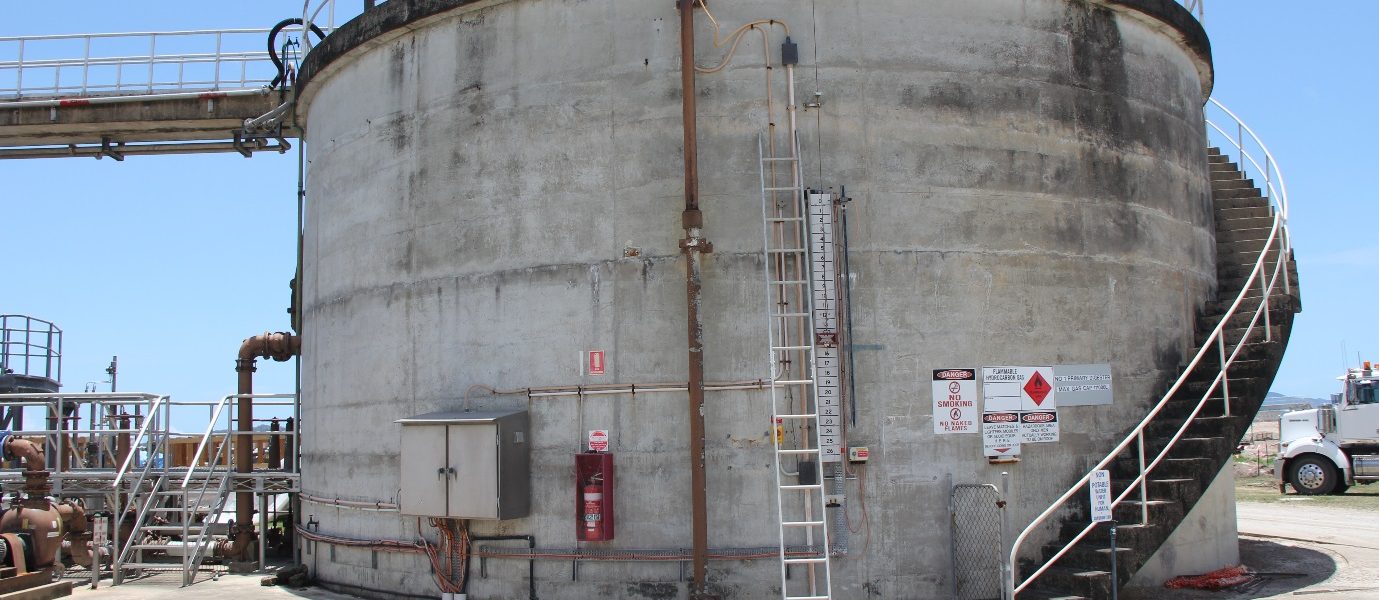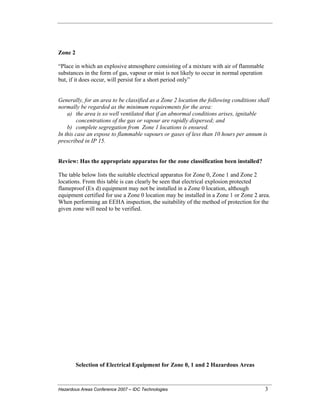The Facts About Roar Solutions Uncovered
The Facts About Roar Solutions Uncovered
Blog Article
Facts About Roar Solutions Revealed
Table of ContentsMore About Roar Solutions5 Easy Facts About Roar Solutions ShownFascination About Roar Solutions
In order to protect installments from a prospective explosion a technique of evaluating and classifying a possibly harmful location is required. The function of this is to make certain the correct option and setup of devices to ultimately avoid an explosion and to ensure security of life.
(https://yoomark.com/content/join-roar-solutions-our-comprehensive-hltaid011-provide-cpr-first-aid-course-and-gain)
No equipment ought to be set up where the surface temperature level of the tools is more than the ignition temperature of the offered risk. Below are some typical dust hazardous and their minimum ignition temperature. Coal Dirt 380C 225C Polythene 420C (melts) Methyl Cellulose 420C 320C Starch 460C 435C Flour 490C 340C Sugar 490C 460C Grain Dirt 510C 300C Phenolic Resin 530C > 450C Aluminium 590C > 450C PVC 700C > 450C Soot 810C 570C The likelihood of the threat existing in a concentration high enough to cause an ignition will certainly vary from location to area.
In order to identify this threat an installation is separated right into areas of risk relying on the amount of time the unsafe is present. These locations are referred to as Areas. For gases and vapours and dusts and fibres there are 3 areas. Zone 0 Zone 20 A harmful ambience is extremely likely to be present and might exist for extended periods of time (> 1000 hours per year) and even continually Area 1 Zone 21 A dangerous environment is possible however not likely to be present for lengthy periods of time (> 10 450 C [842 F] A category of T6 means the minimum ignition temperature is > 85 C [185 F] Harmful area electrical equipment perhaps designed for usage in greater ambient temperatures. This would certainly indicated on the rating plate e.g. EExe II C T3 Ta + 60C( This implies at 60C ambient T3 will not be surpassed) T1 T1, T2, T3, T4, T5, T6 T2 T2, T3, T4, T5, T6 T3 T3, T4, T5, T6 T4 T4, T5, T6 T5 T5, T6 T6 T6 A T Course ranking of T1 suggests the maximum surface area temperature level generated by the instrument at 40 C is 450 C. Thinking the associated T Class and Temperature score for the tools are appropriate for the location, you can constantly make use of a tool with a much more stringent Department rating than required for the location. There isn't a clear answer to this inquiry regrettably. It really does depend upon the sort of devices and what fixings require to be accomplished. Tools with specific test treatments that can't be executed in the field in order to achieve/maintain third event ranking. Have to come back to the manufacturing facility if it is prior to the devices's service. Area Repair Service By Authorised Worker: Complex testing might not be needed nevertheless certain procedures might require to be followed in order for the tools to preserve its 3rd party score. Authorised personnel must be used to do the job properly Fixing must be a like for like substitute. New part must be taken into consideration as a straight substitute requiring no unique screening of the devices after the repair service is total. Each item of devices with a hazardous ranking should be examined independently. These are outlined at a high degree below, but also for even more detailed details, please refer straight to the guidelines.
Roar Solutions - The Facts
The devices register is a detailed database of equipment documents that includes a minimum set of fields to identify each item's area, technological specifications, Ex-spouse classification, age, and ecological data. This details is crucial for tracking and taking care of the tools successfully within hazardous locations. In contrast, for periodic or RBI tasting inspections, the grade will certainly be a combination of Thorough and Close evaluations. The ratio of Detailed to Close assessments will certainly be determined by the Devices Threat, which is analyzed based on ignition danger (the probability of a source of ignition versus the chance of a flammable environment )and the harmful area category
( Area 0, 1, or 2). This variation will additionally affect the resourcing requirements for work preparation. Once Whole lots are specified, you can develop tasting strategies based upon the sample dimension of each Lot, which refers to the variety of arbitrary equipment products to be evaluated. To identify the required sample dimension, 2 elements require to be evaluated: the size of the Lot and the classification of inspection, which indicates the level of effort that must be used( decreased, regular, or raised )to the examination of the Whole lot. By integrating the group of examination with the Great deal dimension, you can after that develop the proper denial standards for an example, meaning the allowed variety of faulty things found within that example. For more information on this process, please describe the Power Institute Standards. The IEC 60079 typical advises that the maximum interval in between examinations ought to not exceed 3 years. EEHA examinations will certainly also be conducted outside of RBI campaigns as component of scheduled upkeep and equipment overhauls or repair services. These assessments can be credited toward the RBI example sizes within the influenced Whole lots. EEHA assessments are conducted to identify mistakes in electrical tools. A heavy scoring system is important, as a solitary tool might have several mistakes, each with differing levels of ignition danger. If the combined rating of both evaluations is less than twice the mistake rating, the Lot is regarded appropriate. If the Whole lot is still taken into consideration inappropriate, it must undergo a full inspection or validation, which may cause stricter examination procedures. Accepted Whole lot: The sources of any kind of faults are recognized. If a common failure setting is located, extra tools may need evaluation and fixing. Faults are classified by intensity( Safety and security, Stability, Housekeeping ), making sure that immediate issues are analyzed and attended to promptly to alleviate any effect on safety and security or operations. The EEHA database need to track and videotape the lifecycle of faults together with the rehabilitative activities taken. Carrying out a durable Risk-Based Inspection( RBI )strategy is critical for ensuring compliance and safety in handling Electric Tools in Hazardous Locations( EEHA) (hazardous area electrical course). Automated Mistake Scoring and Lifecycle Monitoring: Easily take care of mistakes and track their lifecycle to enhance evaluation accuracy. The introduction of this support for risk-based assessment further strengthens Inspectivity's placement as a best-in-class solution for regulatory compliance, as well as for any kind of asset-centric examination use situation. If you are interested in finding out more, we invite you to request a presentation and find exactly how our solution can transform your EEHA management procedures.
Roar Solutions for Dummies

In regards to explosive risk, an unsafe location is an environment in which an eruptive environment exists (or might be anticipated to be present) in quantities that call for special precautions for the construction, installment and use of tools. electrical refresher course. In click for source this article we discover the difficulties faced in the office, the danger control measures, and the required expertises to work securely
It is an effect of contemporary life that we make, store or handle a series of gases or liquids that are considered flammable, and an array of dusts that are regarded flammable. These substances can, in specific problems, form eruptive environments and these can have major and awful consequences. Many of us know with the fire triangle get rid of any among the three elements and the fire can not take place, but what does this mean in the context of hazardous locations? When damaging this down right into its most basic terms it is basically: a combination of a particular quantity of launch or leak of a certain material or product, combining with ambient oxygen, and the visibility of a source of ignition.
In the majority of instances, we can do little regarding the degrees of oxygen airborne, yet we can have substantial influence on sources of ignition, as an example electrical equipment. Harmful areas are documented on the hazardous area classification drawing and are determined on-site by the triangular "EX LOVER" indication. Right here, amongst various other vital details, zones are divided right into 3 kinds depending upon the risk, the possibility and period that an eruptive atmosphere will certainly exist; Zone 0 or 20 is deemed the most dangerous and Zone 2 or 22 is deemed the least.
Report this page